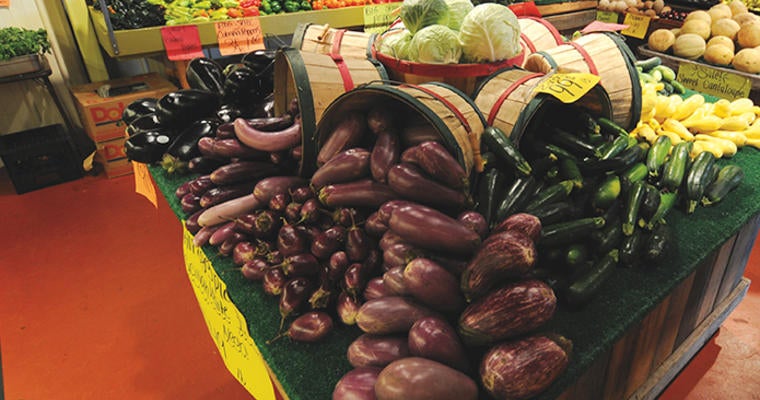How to source smartly to boost business, secure customer loyalty and grow your community presence.
According to the 2016 Culinary Forecast by the National Restaurant Association, the top food trend was “locally sourced meats and seafoods,” number three was “locally grown produce” and the fourth position called out “hyper-local sourcing.” Since consumers are going loco for local, now is the time to capitalize on this craze.
The logistics of local
The Canadian Food Inspection Agency (CFIA) defines local food as food produced in the province or territory in which it is sold, or food sold across provincial borders within 50 km of the originating province or territory. This is one way local is described; however, since there isn’t a universally acknowledged definition of local, customers will often define local based on what it means to them. A commonly accepted definition of a “locavore” describes someone who consumes food that is “grown or produced within a 100-mile radius,” but it’s also defined as someone who consumes food that “is grown in the same geographic region.” Whatever definition you follow, be sure to spell it out for your customers.
Making local work for your menu
If you don’t already have local ingredients or products incorporated into your menu, you’ll want to spend some time considering your options. The current season may limit what’s available in your area, but that just gives you time to map out what to add in the future. Here are some ideas to kick off your local initiatives.
Start small
A good place to start if the local concept is completely new to your establishment is to highlight local drinks or drink ingredients. This can be the obvious things like locally-sourced craft beers, wine, cider and liquor, but could also be the rosemary sprig you use to garnish one of your cocktails. If you already have these items on your menu, then your opportunity lies in drawing attention to them, which could be done using a “local” icon that you place next to the item, bolding their name or sharing the short story of how you discovered them.
Shake hands
Look for local festivals and community events you can participate in. Consider being the food vendor for a local winery or brewery. Scope out the produce at your local farmer’s market and get know the growers. Offer to partner with them on a special “harvest” dining experience and create a unique menu using their crops. All of these are small, locally-focused gestures, but they can help you build customer loyalty and meaningful relationships within your community..
Make your own map
Sometimes food service operators will try to fit their local ingredients into a very limited radius. An alternative: expand this map but be transparent about doing so. Your restaurant may be based in a large city, but you could still call-out the seafood you get from 300 miles away. Keep the focus on the region and it’ll have the same impact as if you caught the fish yourself.
Share the benefits
Local food is known to help promote sustainable food practices. The food travels less and that reduces the carbon footprint. There are customers who may appreciate that knowledge and feel better about their meal choice because of it.
Source local products with us
Gordon Food Service offers a Green Leaf identifier program, a reporting system that helps our customers identify products made locally. It offers the possibility to find products in your division that are local, according to the division definition. A green leaf sign appears next to the item in our online ordering system which also allowed the users to create reports based on local purchases.
Explore hyperlocal
Hyperlocal is food sourced from the same community in which you reside. Although hyperlocal may not be a realistic option for all of your needs, you can incorporate it on a smaller scale. If you have a some outdoor space, plant a garden behind your building or along the side of it. Raised beds don’t take up a lot of room and are easy to maintain. Or consider creating a green roof. Even potted herbs on a patio would count. Just remember to call them out when they make an appearance on your menu.
The local food movement is gaining momentum. No matter how you choose to approach it, it’ll do good things for your business and your community. And that’s something we can all rally around.
Ontario Healthy Menu Choices Act Takes Effect January 1
The Ontario Healthy Menu Choices Act, which sets menu-labeling parameters for foodservice establishments with 20 or more units in the province, is in effect as of January 1.

























